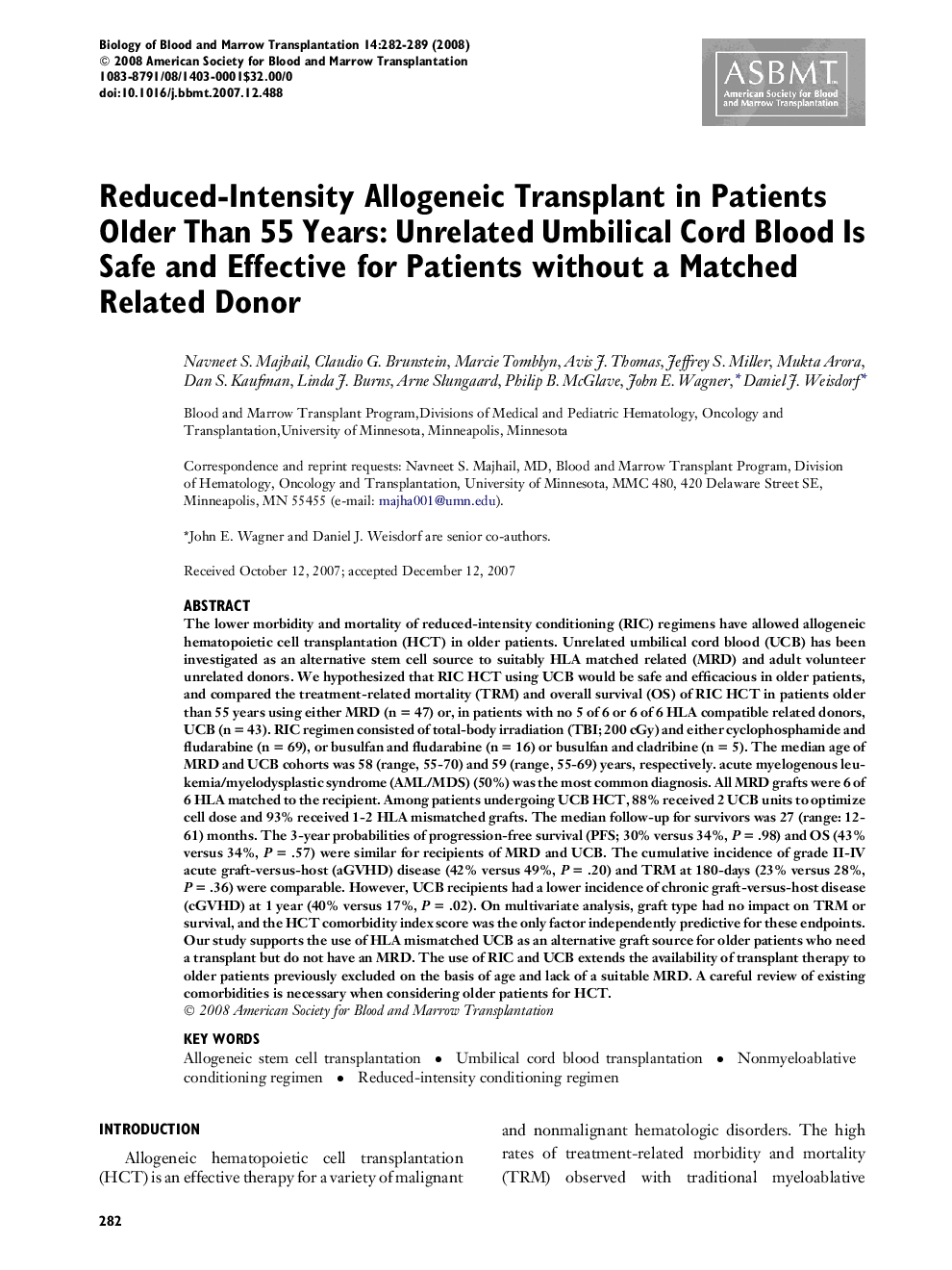| کد مقاله | کد نشریه | سال انتشار | مقاله انگلیسی | نسخه تمام متن |
|---|---|---|---|---|
| 2104676 | 1546366 | 2008 | 8 صفحه PDF | دانلود رایگان |

The lower morbidity and mortality of reduced-intensity conditioning (RIC) regimens have allowed allogeneic hematopoietic cell transplantation (HCT) in older patients. Unrelated umbilical cord blood (UCB) has been investigated as an alternative stem cell source to suitably HLA matched related (MRD) and adult volunteer unrelated donors. We hypothesized that RIC HCT using UCB would be safe and efficacious in older patients, and compared the treatment-related mortality (TRM) and overall survival (OS) of RIC HCT in patients older than 55 years using either MRD (n = 47) or, in patients with no 5 of 6 or 6 of 6 HLA compatible related donors, UCB (n = 43). RIC regimen consisted of total-body irradiation (TBI; 200 cGy) and either cyclophosphamide and fludarabine (n = 69), or busulfan and fludarabine (n = 16) or busulfan and cladribine (n = 5). The median age of MRD and UCB cohorts was 58 (range, 55-70) and 59 (range, 55-69) years, respectively. acute myelogenous leukemia/myelodysplastic syndrome (AML/MDS) (50%) was the most common diagnosis. All MRD grafts were 6 of 6 HLA matched to the recipient. Among patients undergoing UCB HCT, 88% received 2 UCB units to optimize cell dose and 93% received 1-2 HLA mismatched grafts. The median follow-up for survivors was 27 (range: 12-61) months. The 3-year probabilities of progression-free survival (PFS; 30% versus 34%, P = .98) and OS (43% versus 34%, P = .57) were similar for recipients of MRD and UCB. The cumulative incidence of grade II-IV acute graft-versus-host (aGVHD) disease (42% versus 49%, P = .20) and TRM at 180-days (23% versus 28%, P = .36) were comparable. However, UCB recipients had a lower incidence of chronic graft-versus-host disease (cGVHD) at 1 year (40% versus 17%, P = .02). On multivariate analysis, graft type had no impact on TRM or survival, and the HCT comorbidity index score was the only factor independently predictive for these endpoints. Our study supports the use of HLA mismatched UCB as an alternative graft source for older patients who need a transplant but do not have an MRD. The use of RIC and UCB extends the availability of transplant therapy to older patients previously excluded on the basis of age and lack of a suitable MRD. A careful review of existing comorbidities is necessary when considering older patients for HCT.
Journal: - Volume 14, Issue 3, March 2008, Pages 282–289